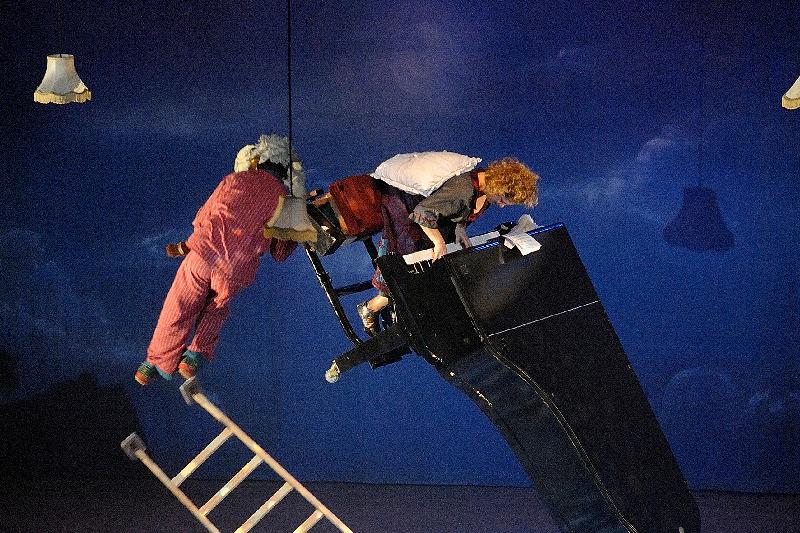Following is a question by the Dr Hon Pierre Chan and a written reply by the Secretary for Food and Health, Professor Sophia Chan, in the Legislative Council today (May 16):
Question:
Regarding the complaints and claims of medical negligence received by the Hospital Authority (HA), will the Government inform this Council:
(1) whether it knows the number of claims of medical negligence received by each public hospital in each of the past five years (i.e. from January 1, 2013 to December 31, 2017), and set out a breakdown by type of claims in tables of the same format as Table 1;
(2) whether it knows the number of complaints in each public hospital which were found, in each of the past five years, to be substantiated and needed further follow-up actions after being handled by the hospitals concerned, and the respective numbers of the various types of healthcare personnel (i.e. doctors, nurses and allied health professionals) who were punished because they had made mistakes in the relevant incidents, and set out a breakdown by type and rank of such personnel in tables of the same format as Table 2; the forms of punishment they received;
(3) given that complainants may appeal to the Public Complaints Committee (PCC) of HA if they are not satisfied with the decisions made by public hospitals in respective of their complaints, whether it knows the number of appeal cases received by PCC in each of the past three years and, among them, the number of those found by PCC to be substantiated or partly substantiated (set out in Table 3);
(4) whether it knows the number of claims of medical negligence in each of the past two years, broken down by different handling methods/results (set out in Table 4);
(5) whether it knows the number of claims for which compensation was paid to the patients concerned or their families by HA in each of the past two years, and the respective total amounts of compensation paid and the relevant expenditure incurred, for various types of claims (set out in Table 5); and
(6) given that the target response time set by HA for handling complaints is within six weeks (within three months for complex cases), and that by PCC is within three to six months (possibly longer time needed for complex cases), whether it knows, among the complaints the handling of which was completed by each public hospital and by PCC in each of the past five years, the respective numbers of those in which the response time failed to meet such targets (set out in Table 6), and the reasons for failure to meet the targets?
Table 1: Number of claims of medical negligence
Hospital:
| Type of cases |
Year |
| 2013 |
2014 |
2015 |
2016 |
2017 |
| |
|
|
|
|
|
Table 2: Number of healthcare personnel punished
| Healthcare personnel |
Year |
| 2013 |
2014 |
2015 |
2016 |
2017 |
Doctors:
(of different ranks) |
|
|
|
|
|
Nurses:
(of different ranks) |
|
|
|
|
|
Allied health professionals:
(of different ranks) |
|
|
|
|
|
Table 3: Number of appeal cases received by the Public Complaints Committee
| Appeal cases |
Year |
| 2015 |
2016 |
2017 |
| Total |
|
|
|
| Number of cases found to be substantiated or partly substantiated |
|
|
|
Table 4: Number of claims of medical negligence, broken down by handling method/result
| Handling method/result |
Year |
| 2016 |
2017 |
| Settled out of court |
|
|
| Referred to mediation |
|
|
| Settled during mediation |
|
|
| Settled after mediation |
|
|
| Referred to arbitration |
|
|
| Settled through arbitration |
|
|
| Ruled by the court |
|
|
| Total |
|
|
Table 5: Total amount of compensation paid and relevant expenditure incurred for claims
| Type of compensation/expenditure |
Year |
| 2016 |
2017 |
| Total amount of compensation paid |
|
|
| Total amount of compensation paid in respect of cases settled out of court |
|
|
| Total amount of compensation paid pursuant to the agreements reached by mediation |
|
|
| Total amount of compensation paid pursuant to arbitration awards |
|
|
| Total amount of compensation paid pursuant to court rulings |
|
|
| Mediation fees paid by HA |
Mediators |
|
|
| Lawyers |
|
|
| Others |
|
|
| Arbitration fees paid by HA |
Arbitrators |
|
|
| Lawyers |
|
|
| Others |
|
|
| Legal fees paid by HA |
Lawyers |
|
|
| Court |
|
|
| Others* |
|
|
* excluding fees related to mediation and arbitration
Table 6: Number of complaints in which the response time failed to meet the targets
| Year |
Public Complaints Committee |
Public hospitals |
| |
|
|
|
|
|
|
|
| 2013 |
|
|
|
|
|
|
|
|
|
| 2014 |
|
|
|
|
|
|
|
|
|
| 2015 |
|
|
|
|
|
|
|
|
|
| 2016 |
|
|
|
|
|
|
|
|
|
| 2017 |
|
|
|
|
|
|
|
|
|
Reply:
President,
The Hospital Authority (HA) has a two-tier mechanism in place to handle complaints lodged by patients and the public. The first tier is at the hospital level which covers the handling of all complaints lodged for the first time. If the complainant is not satisfied with the outcome of the complaint, he or she may appeal to the second tier, i.e. the Public Complaints Committee (PCC) of the HA. The PCC is a committee established under the HA Board responsible for independently considering and deciding on all appeal cases and putting forward recommendations on service improvement to the HA. Members of the PCC are not employees of the HA and, by virtue of their independent status, will handle all appeal cases fairly and impartially.
My reply to the various parts of the question raised by Dr Hon Pierre Chan is as follows:
(1) The HA has not classified the cases of claims arising from medical incidents by nature. Table 1 at annex sets out the number of claim received by the HA by cluster in the past five years.
(2) One of the main objectives of the HA's complaint mechanism is to help resolve problems for the complainants and improve service delivery during the course of complaint handling. Hence, when the HA handles the cases, the emphasis is not on whether the cases are substantiated. In fact, whenever room for improvement in the delivery of service is identified in the handling of complaints, the HA will take appropriate follow-up actions irrespective of whether the cases are substantiated or not. The HA does not collect data on whether the complaint cases handled at the first-tier level are substantiated or not.
The HA has put in place an established mechanism to handle disciplinary matters of its staff. Disciplinary actions taken are not confined to cases relating to medical complaints and claims. The HA will consider the seriousness of the incidents and take appropriate disciplinary actions, including counselling, verbal or written warnings, and dismissal for cases of gross misconduct.
The HA does not maintain statistics on disciplinary actions by rank and by type of staff. Table 2 at annex sets out the number of disciplinary actions taken by the HA in the past five years:
(3) Table 3 at annex sets out the statistics on the appeal cases handled by the PCC of the HA in the past three years:
(4) and (5) Table 4 and 5 at annex set out the statistics on cases of claims received by the HA in respect of medical incidents in the past two years.
(6) The hospitals and the PCC will, upon receipt of complaints, handle these cases as soon as possible. As the complexity of each case varies, the time required for handling individual cases is different.
Some complaint cases cannot be concluded within the target response time possibly because of the involvement of several hospitals or several departments within a hospital in the case, the need for multiple clarification or evidence collection during investigation, the involvement of complex clinical management in the case, or the need to seek advice from independent medical experts.
Table 6 at annex sets out the number of complaint cases handled by the PCC and the HA by clusters that were completed beyond the target response time.





